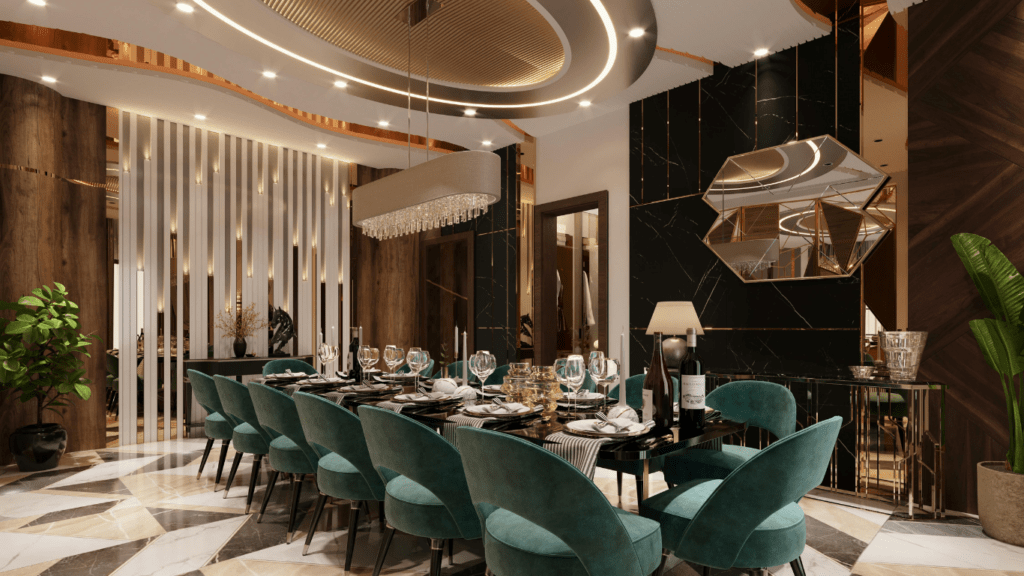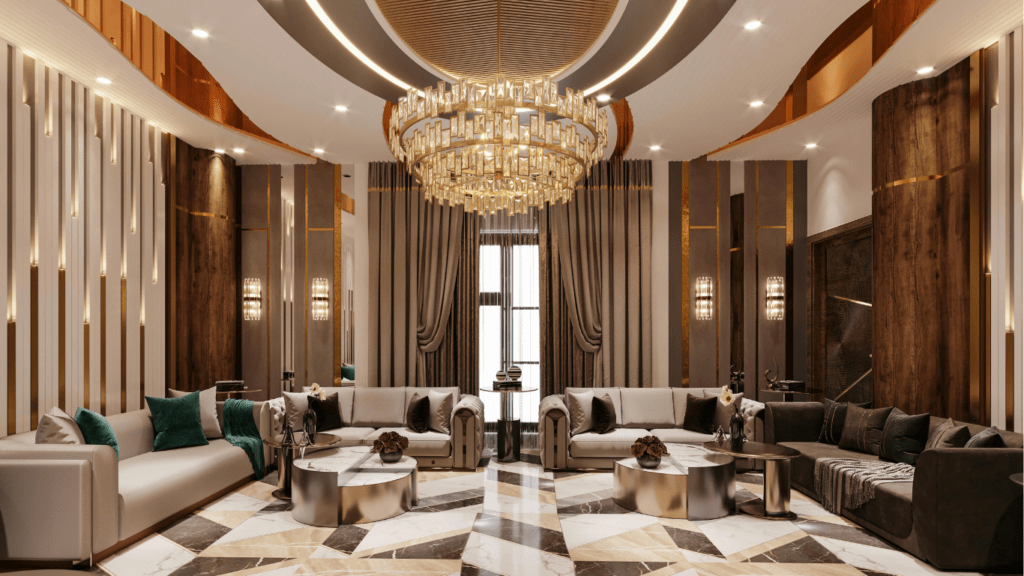Understanding High-End Furniture Styles
Mixing high-end furniture styles can transform your space into a cohesive masterpiece. To achieve this, you’ll need a solid grasp of different styles.
Classic Styles
Classic styles draw inspiration from historical periods like Baroque and Victorian. These pieces often feature intricate carvings and elegant fabrics like velvet or silk. You’ll find mahogany wood and ornate details in classic furniture. Use this style to add a touch of sophistication.
Modern Styles
Modern styles focus on simplicity and functionality. Expect to see clean lines, minimal embellishments and materials like glass, steel and leather. These pieces often have monochromatic color schemes. Modern furniture creates a sense of openness and clarity.
Transitional Styles
Transitional styles blend the old with the new, combining elements from both classic and modern designs. These pieces often incorporate neutral colors and straightforward lines with subtle details. This style provides balanced aesthetics suitable for those who appreciate both tradition and innovation.
The Art of Mixing Different Styles

Mixing furniture styles creates a unique space. Combining various aesthetics requires careful thought.
Identifying Common Elements
- First, identify common elements across different styles.
- Look for shared color schemes, materials, or shapes.
- Both modern and mid-century furniture might feature clean lines.
- Similar wood tones in classic and transitional pieces offer another point of cohesion.
- Recognizing these elements helps create a harmonious look.
Balancing Contrasting Features
Next, balance contrasting features to avoid visual chaos. If pairing an ornate Baroque sofa with a minimalist coffee table, ensure other room elements tie them together. Use neutral colors for textiles or add accessories like rugs that incorporate both design elements. Balancing contrasts lets each piece stand out without clashing.
Choosing a Color Palette
A well-chosen color palette is essential when mixing high-end furniture styles. It provides a cohesive foundation that enhances the aesthetic of the combined elements.
Neutral Tones
Neutral tones like beige, gray, and white serve as a versatile canvas for blending different furniture styles. They allow standout pieces like a modern marble table or a classic velvet sofa to shine without overwhelming the space. I recommend using neutral walls, flooring, or large furniture items to anchor the design. Incorporating various textures, such as rough linen or smooth leather, adds depth and interest while maintaining harmony across styles.
Bold Colors
Bold colors add vibrancy and personality to a mixed-style space. Use bold hues sparingly to create focal points, such as a statement armchair or an accent wall. For example, pairing a rich, jewel-toned armchair with neutral-toned surroundings can draw attention without clashing with other elements. When incorporating bold colors, repeat them in smaller accessories like cushions or artwork to maintain balance. This approach ensures each style contributes to the overall design without creating visual chaos.
Selecting Statement Pieces
Choosing the right statement pieces sets the tone for any high-end furniture mix. Focus on items that not only draw attention but also integrate well with the overall design aesthetic.
Importance of Focal Points
Focal points anchor the room and create visual interest. A well-chosen statement piece, like:
- ornate chandelier,
- designer sofa
- art piece
can become the central attraction. I recommend selecting items that reflect personal style while maintaining harmony with surrounding furnishings. Ensure the piece is proportionate to the space, as oversized items can overwhelm, while too-small pieces may get lost.
Blending Vintage and Contemporary
Seamlessly integrating vintage and contemporary pieces adds depth and character. For instance, a vintage rug combined with modern furniture creates a layered look. Start with a neutral base, such as a contemporary sofa in muted tones, and add vintage elements, like a mid-century coffee table or an antique mirror. When blending these styles, balance is crucial. Pairing sleek, polished materials with older, textured items can highlight contrasts without creating discord.
Incorporating Accessories
Incorporating accessories can unify the overall design while adding layers of interest.
Textiles and Rugs
Textiles like cushions, throws, and rugs add texture and warmth to a space. Choose patterns and fabrics that echo elements from your high-end furniture styles. For instance, if you’ve got a Victorian sofa with intricate carvings, pair it with a modern rug that has a subtle geometric pattern. This blend keeps the space visually engaging. Use rugs to define different zones within a room. A bold-patterned rug can anchor a seating area, making it a focal point. Layer rugs of varying textures for a sophisticated look that ties various furniture pieces together.
Art and Decor
Art and decor items reflect your personal style and enhance the mixed high-end furniture aesthetics. Select pieces that complement your furniture styles—modern art can balance traditional furnishings, while classic sculptures add depth to contemporary settings. Create a gallery wall to incorporate diverse art styles; ensure the color palette aligns with your room’s scheme. Use decor items like vases, lamps, and clocks strategically. For example, a sleek metal vase can contrast beautifully with a rustic wooden side table. Place decor pieces thoughtfully to maintain balance and harmony in your room’s design.



 Lead Interior Design Expert
Maud Berthold is Luxe House Maker’s lead interior designer, bringing over a decade of experience in creating luxurious and functional living spaces. Specializing in the art of blending timeless elegance with modern sensibilities, Maud’s designs are known for their sophistication and attention to detail. She works closely with clients to craft interiors that reflect their personal tastes while adhering to the highest standards of luxury. From high-end furniture to custom décor, Maud ensures that each project is an exquisite balance of form and function, making her a key asset to the Luxe House Maker team.
Lead Interior Design Expert
Maud Berthold is Luxe House Maker’s lead interior designer, bringing over a decade of experience in creating luxurious and functional living spaces. Specializing in the art of blending timeless elegance with modern sensibilities, Maud’s designs are known for their sophistication and attention to detail. She works closely with clients to craft interiors that reflect their personal tastes while adhering to the highest standards of luxury. From high-end furniture to custom décor, Maud ensures that each project is an exquisite balance of form and function, making her a key asset to the Luxe House Maker team.
